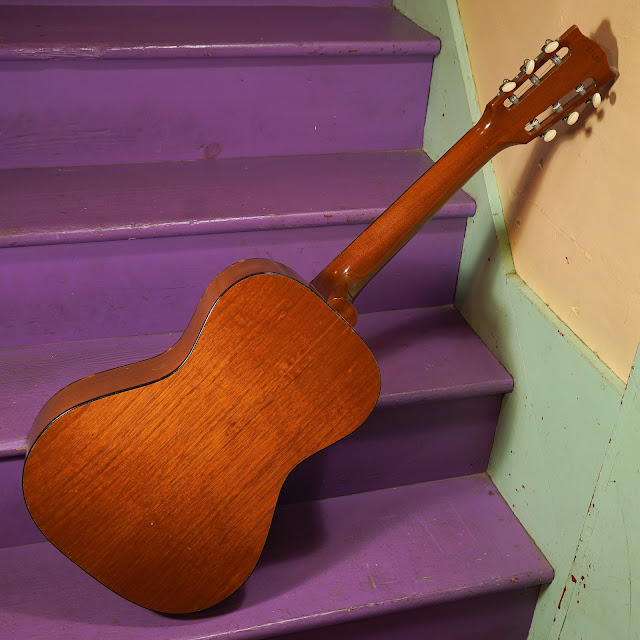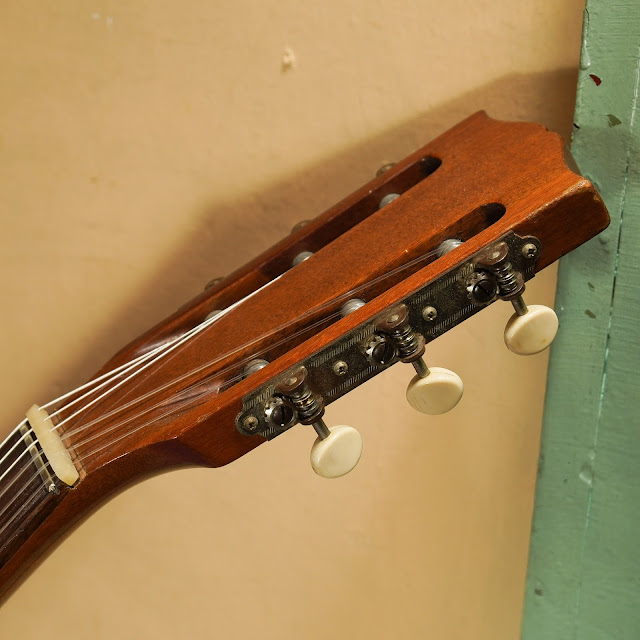1962 Gibson C-1S 3/4-Size Classical Guitar
This cute little classical guitar was a trade-in. It's the first time I've had this model in the shop, too, though I've also had a number of full-size Gibson C-models come through in the past. This is like one of those, but much lighter-built and smaller. It's a "terz"-scale (or 3/4-size) instrument with a short, 22 3/4" scale length. While I have it tuned to standard E-to-E tuning in the video, there's no reason it couldn't be tuned-up G-to-G (like with a capo on the 3rd fret of a normal guitar) with the same string set.
Under the hood, it's fan-braced and the bracing is very light. There's a reason it sounds as round and full as it does, with a sort-of midsy push that reminds me of flamenco guitars. The top is solid spruce and it has solid mahogany back, sides, and neck.
While it's a bit worn in areas and shows some blem from previous work done on the guitar, post-repairs it's playing spot-on and is ready to go.
Repairs included: brace regluing, fret level/dress, new bone nut, new bone saddle, minor stabilization to top binding, minor crack repairs, setup -- and, previously, someone else had done minor crack repair work.
Top wood: solid spruce
Back & sides wood: solid mahogany
Bracing type: fan, light
Bridge: rosewood
Fretboard: rosewood
Neck wood: mahogany
Action height at 12th fret: 3/32" bass and 1/16" treble (quick)
String gauges: light tension nylon -- could be tuned-up G-to-G
Neck shape: medium C/D
Board radius: flat
Neck relief: straight
Fret style: medium-bigger
Scale length: 22 3/4"
Nut width: 1 7/8"
Body width: 13 1/4"
Body depth: 4 1/2"
Weight: 3 lbs 7 oz
Condition notes: the top binding has outgassed, causing lots of tiny little fractures and damage to the top binding itself and also discoloration (darkening) to the finish on the top surrounding it. This is really common on '70s Gibson flattops as well as same-period Gretsch instruments, but less common on Gibsons, though it does happen from time to time. I've stabilized the binding where possible but it's still a little fragile. The top also has a repaired center seam crack below the soundhole which is discolored and two repaired hairline cracks at the treble waist on the top -- also discolored. Despite these, it's in good structural shape. The frets are possibly replacements as well. The nut and saddle are new bone ones I made for replacing missing/damaged old ones. The neck angle is good and there's plenty of saddle height.
It comes with: sorry, no case.




















Comments